Nakamise Street
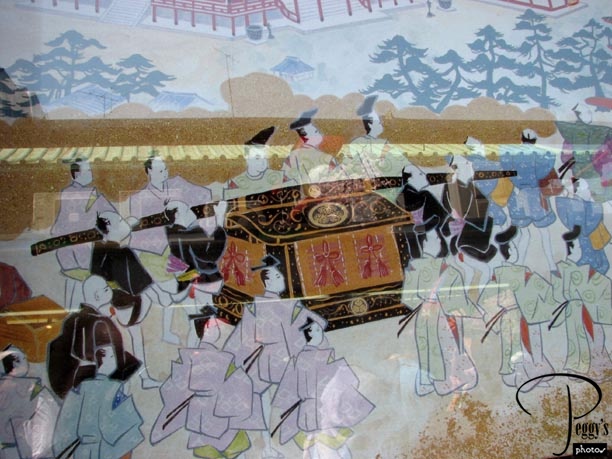
Art work.

Nakamise Street
Ginza Station
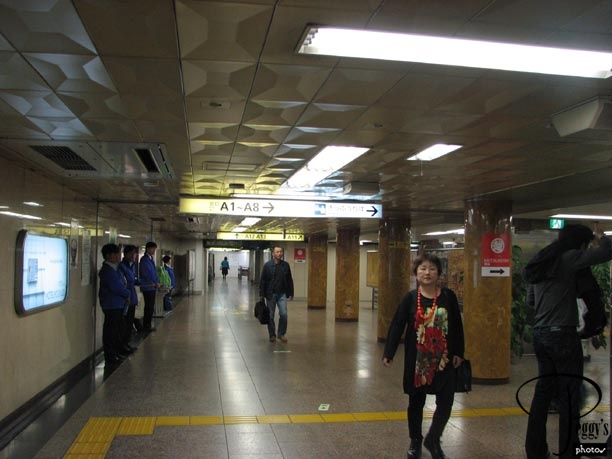
Walking through the Ginza Station. Some of the subway stations were extensive underground cities, full of shops, bakeries, restaurants, etc. The Ginza underground was huge, and depending on which of the about 10 or more entrances you took to get underground, you could be walking good parts of a mile to get to where you need to go. All the stations were very clean. In this photo, you can see that people are walking on the left.

Ginza Station
Senso-ji (Asakusa Kannon) Buddist Temple
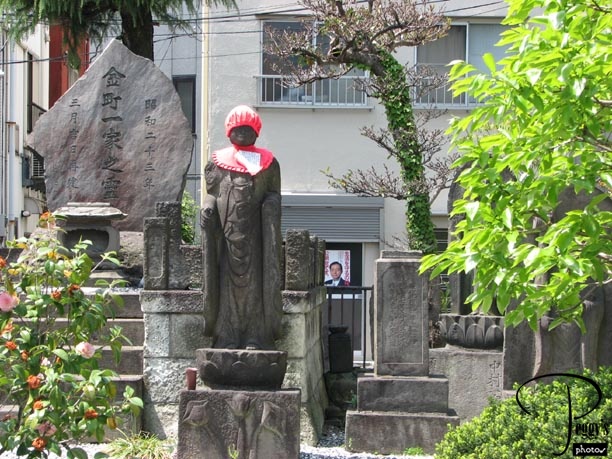
The Senso–ji Buddhist Temple is also known as the Asakusa Kannon Temple. In the year 628, two brothers fished a statue of Kannon, the goddess of mercy, out of the Sumida River in Tokyo. They kept putting the statue back in the river, but it always came back. So the Senso–ji Temple was built where it is today, near the Sumida River, to honor the goddess Kannon. It is the oldest and most sacred temple in Tokyo. The Buddist religion originated in India in the 6th century B.C. and came to Japan via China and Korea. In contrast to Shintoism, Buddhism has much scripture, many rites, and moral precepts. We came into the temple grounds from the bus parking lot and passed this statue. If I have this right, in the month of April, some of the statues at the Buddist temples are covered in red clothes as a prayer for deceased children.

Senso-ji (Asakusa Kannon) Buddist Temple
Senso-ji (Asakusa Kannon) Buddist Temple
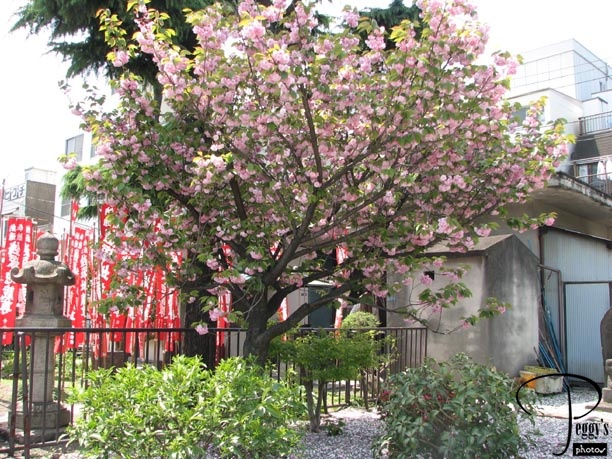
A blooming cherry tree seen on our walk to the main temple area.

Senso-ji (Asakusa Kannon) Buddist Temple
Senso-ji (Asakusa Kannon) Buddist Temple
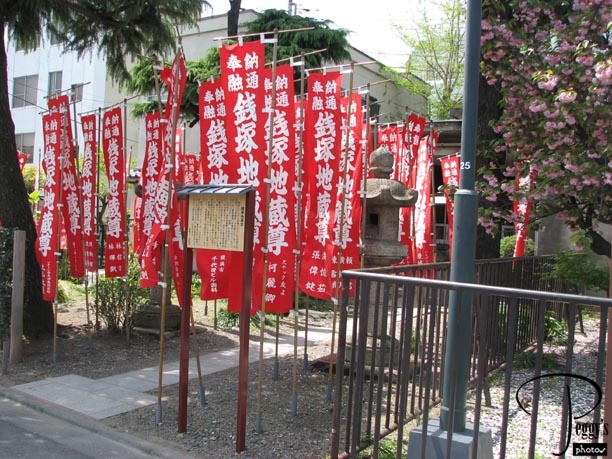
We also passed these red banners. Again, if I have this right, these banners are hung for people for have made a donation to the temple.

Senso-ji (Asakusa Kannon) Buddist Temple
Senso-ji (Asakusa Kannon) Buddist Temple
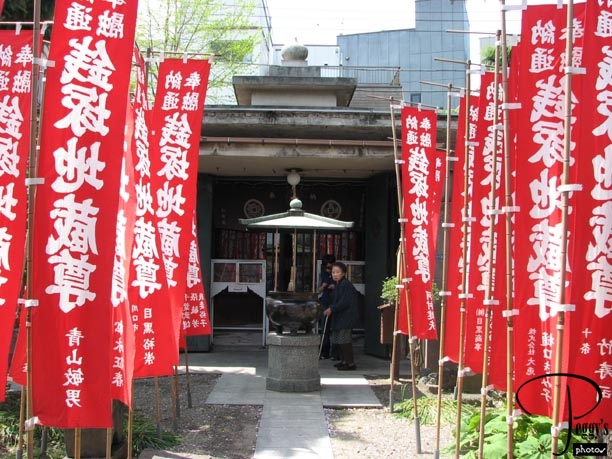
Another view of the banners.

Senso-ji (Asakusa Kannon) Buddist Temple
The Joukoro
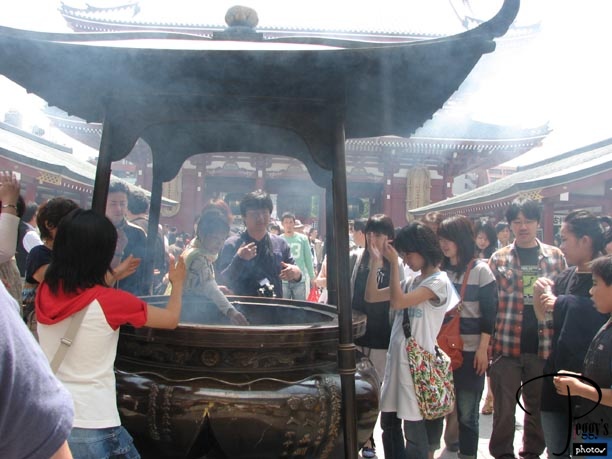
A bronze incense burner (a “joukoro”) is seen in front of the Main Hall. You wave the smoke from the burning incense over your body to heal or prevent illness and for purification before praying.

The Joukoro
The Joukoro
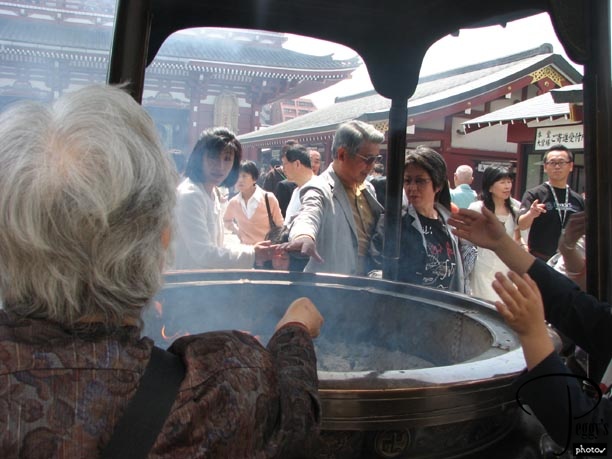
Closer–up of the joukoro.

The Joukoro
The Joukoro
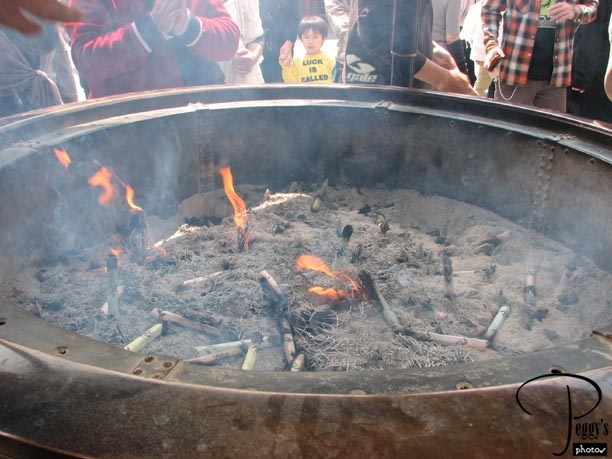
Incense burning inside the joukoro.

The Joukoro
The Main Hall
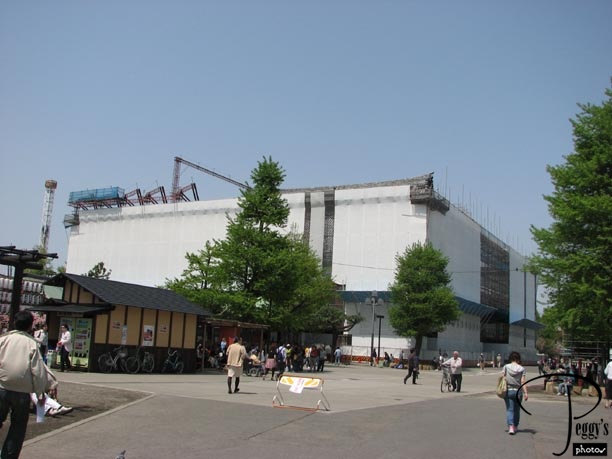
The main hall was under rennovation, but we could walk up its stairs in front of it for an inside view.

The Main Hall
The Main Hall
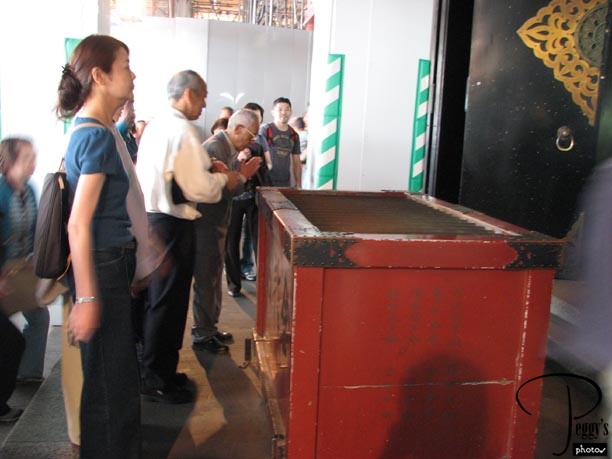
Before you pray at the main hall, people toss coins into this slated box. We were told that throwing in the Japanese coin with the hole in it may bring you better luck. The coins make a planking sound as they go through the slots. After throwing in your coins, it is time to pray, using the same sequence as in the Shinto temples: bow twice out of respect, clap twice to get the attention of the gods, say your prayer with hands together, and then bow once.

The Main Hall
The Main Hall
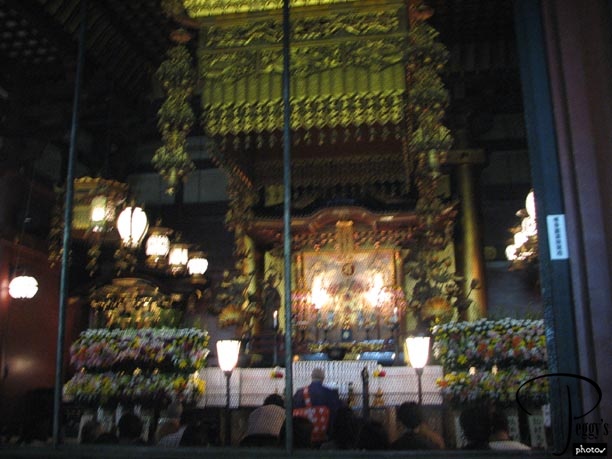
Altar at the Main Hall.

The Main Hall
Statues
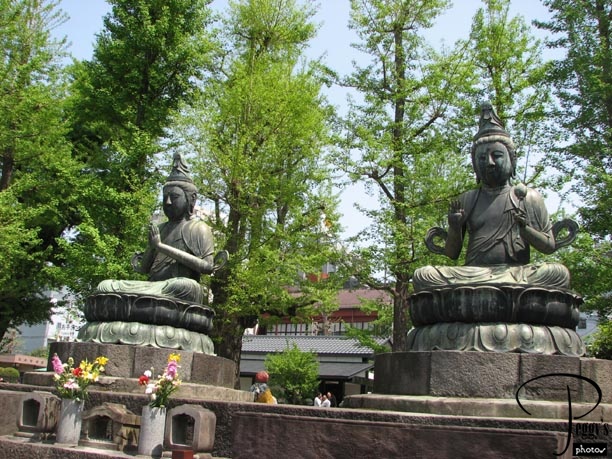
Statues on side grounds between the Main Temple and the Main Gate

Statues
Statues
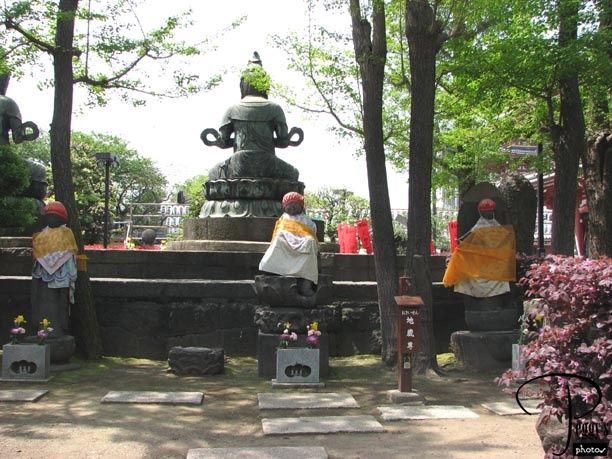
More statues.

Statues
Statue
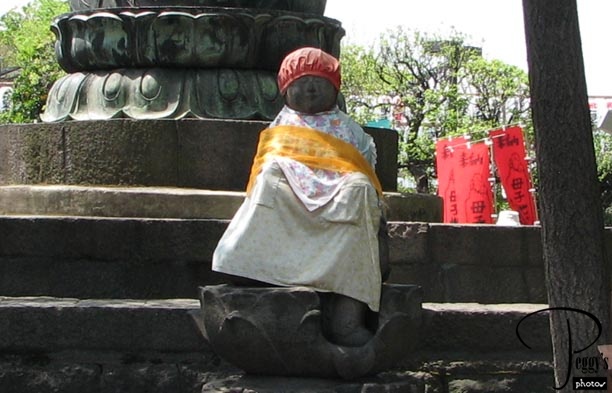
Close–up of one of the statues in the last photo.

Statue
Statue
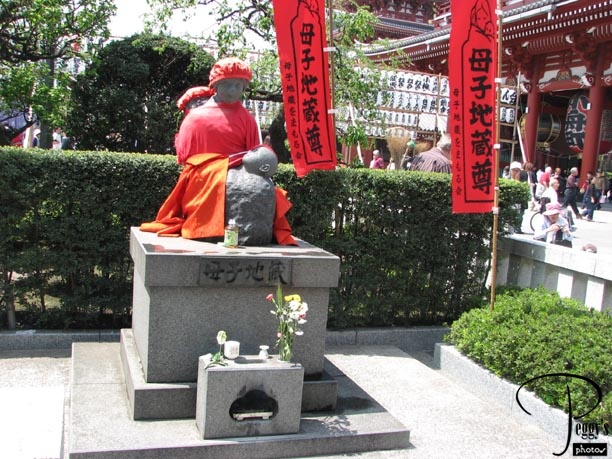
Another statue.

Statue
Cherry Trees
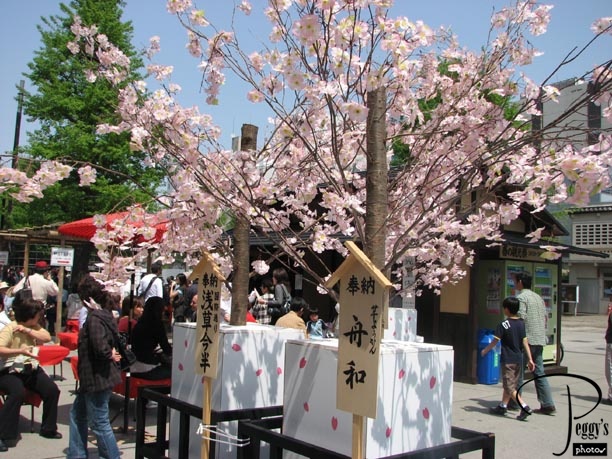
Cherry trees between the Main Hall and the Main Gate.

Cherry Trees
Pagoda
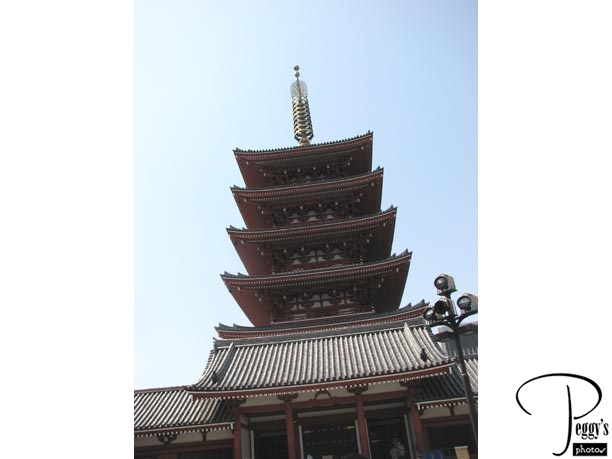
A five–story pagoda is also on the temple grounds.

Pagoda
Main Gate
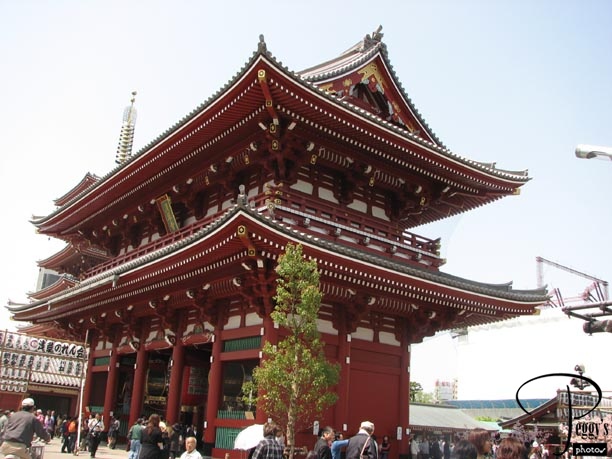
The stunning Main Gate (a “Hozo–mon), built in 1964.

Main Gate
Main Gate
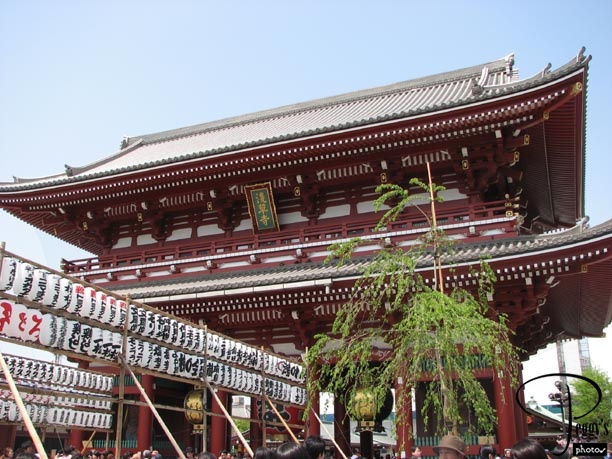
Another view of the Main Gate.

Main Gate
Main Gate
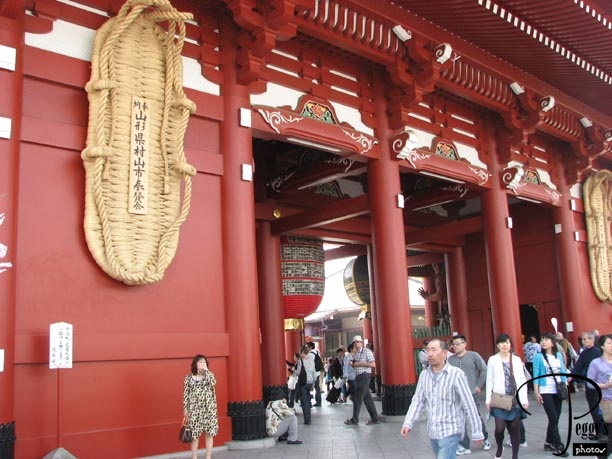
Another view.

Main Gate
Main Gate
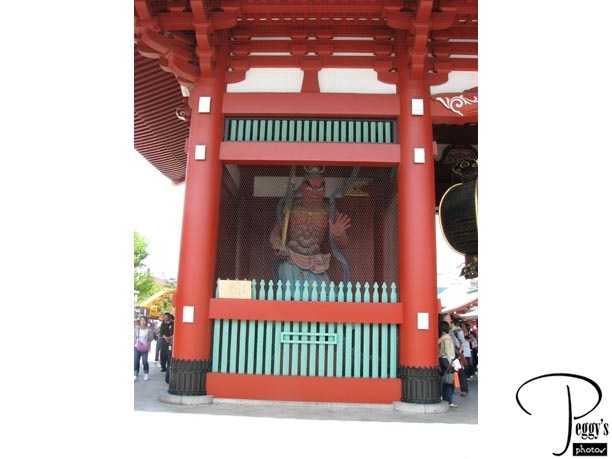
There are statues on either side of the Main Gate, ones to ward off evil spirits.

Main Gate
Main Gate
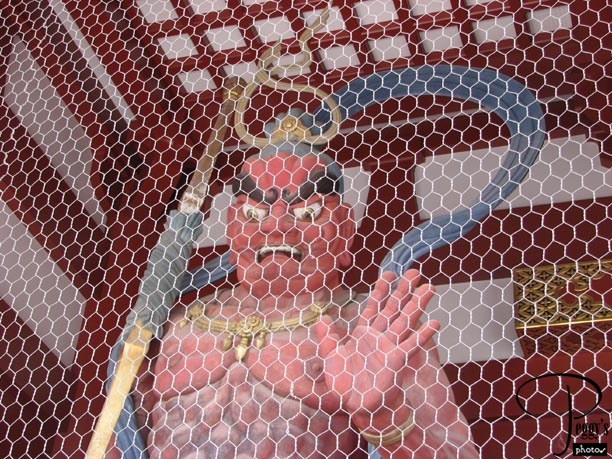
Close–up of the last photo.

Main Gate
Main Gate
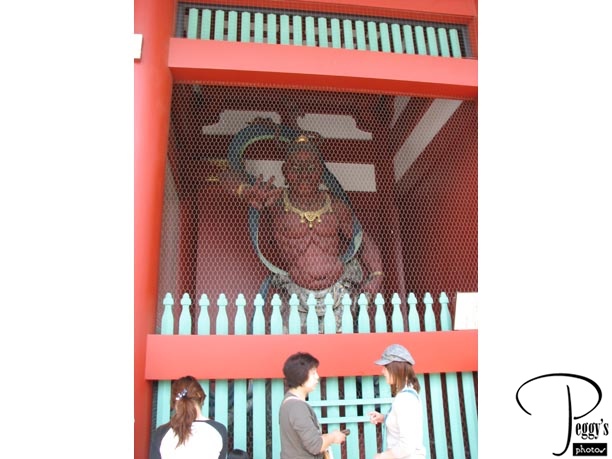
Statue on the other side of the Main Gate.

Main Gate
Main Gate
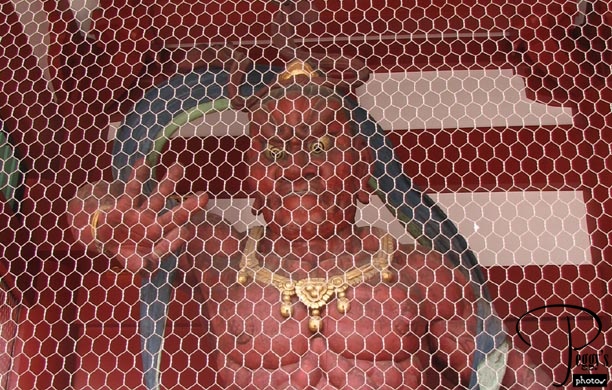
Close–up of the last photo.

Main Gate
Main Gate
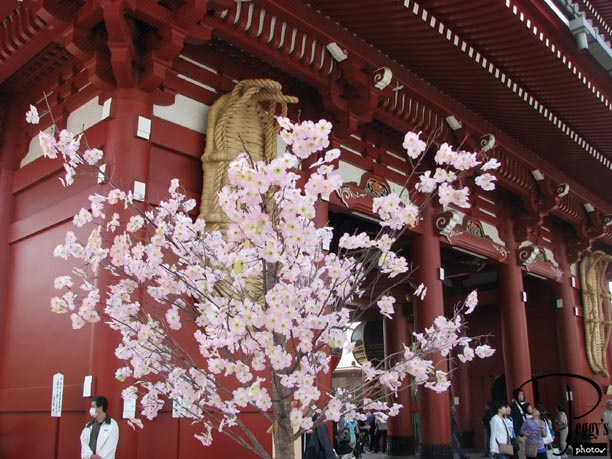
Cherry blossoms at the Main Gate.

Main Gate
Main Gate
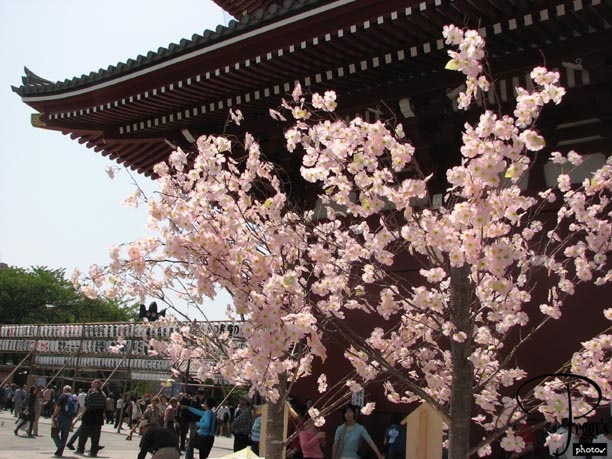
More of the cherry blossoms.

Main Gate
Main Gate
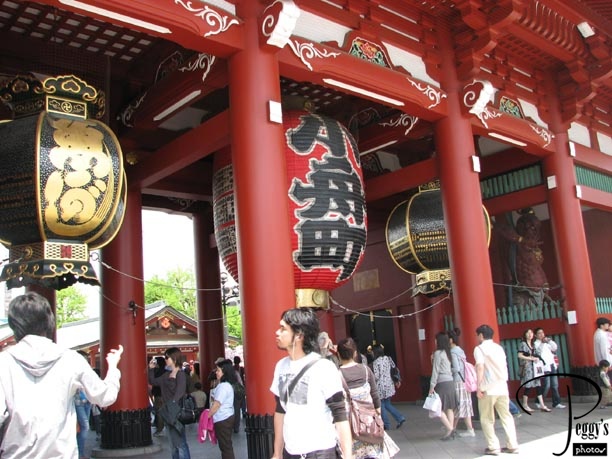
Inside the Main Gate.

Main Gate
Main Gate
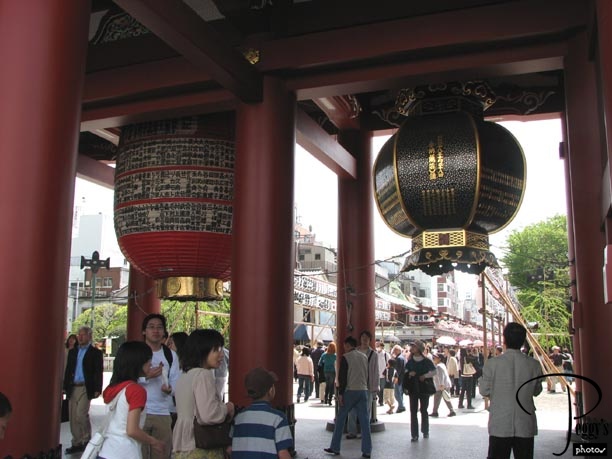
Inside the Main Gate.

Main Gate
Nakamise Street
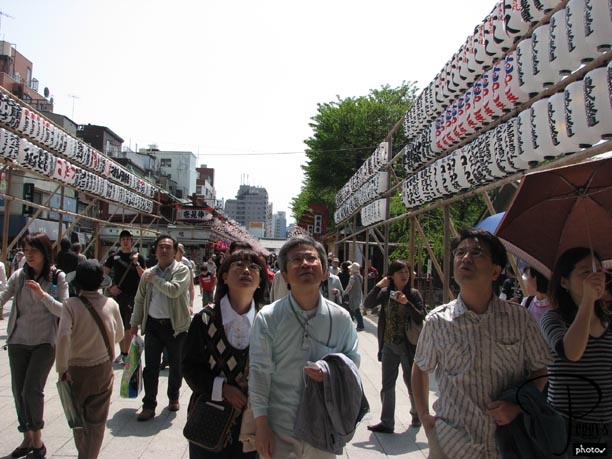
Past the Main Gate is the Nakamise shopping street. Today was Sunday and it was so crowded on the street that even if you wanted to visit one of the stalls you would have trouble just getting near it (I came back here at a much less crowded time on another tour). I forgot to ask about the meaning of the white lanterns (?) hanging at the temple and I am unable to find a reference to them, but I think they are similar to the banners in that they are hung for people who make donations to the Senso–ji Temple.

Nakamise Street
Nakamise Street
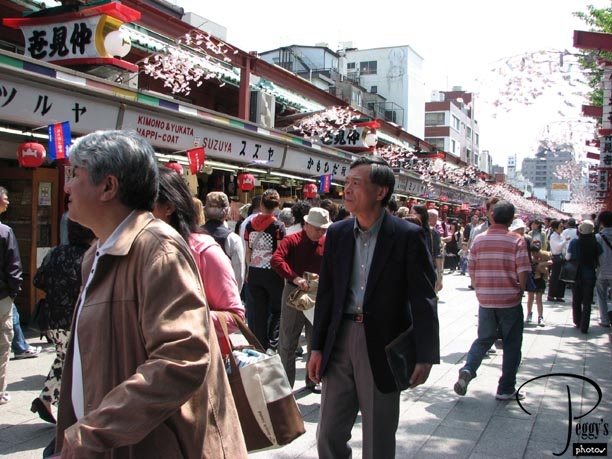
Another view of Nakamise Street.

Nakamise Street
Nakamise Street
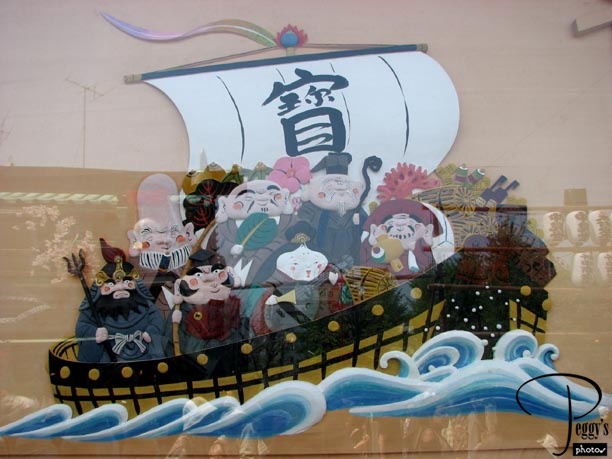
Even though it was so crowded, I was able to take the following photos of art work covered in glass on one side of the street.

Nakamise Street
Nakamise Street
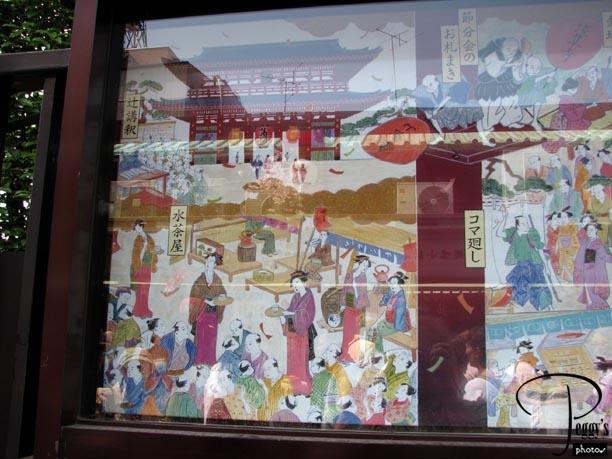
More art work.

Nakamise Street
Nakamise Street

Art work.

Nakamise Street
Nakamise Street
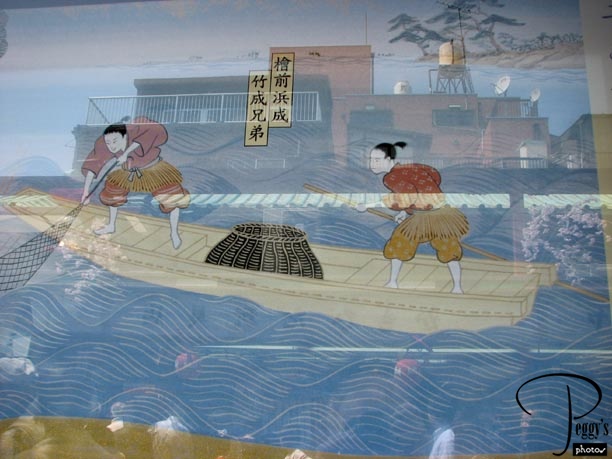
Art work.

Nakamise Street
Nakamise Street
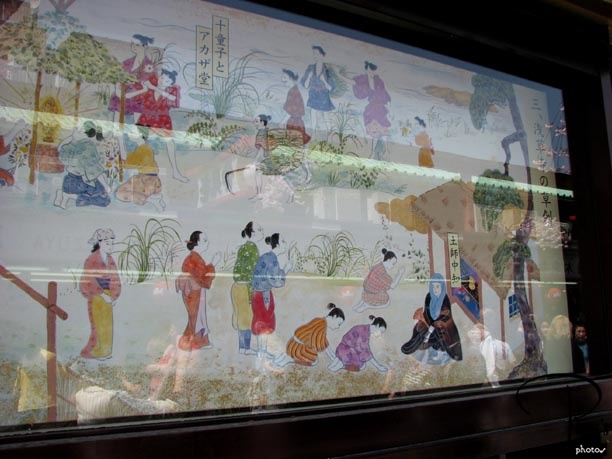
Art work.

Nakamise Street
Ginza
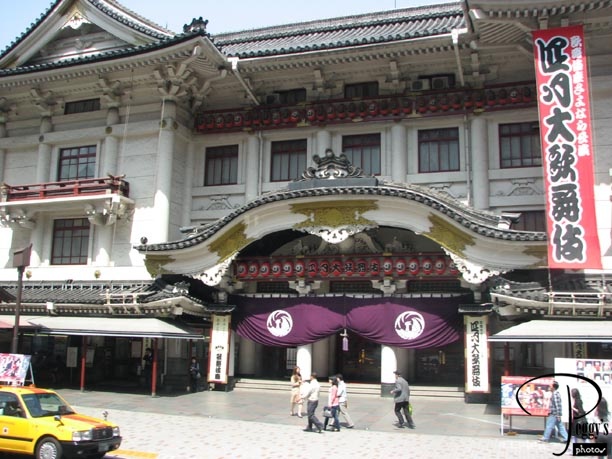
We were given the option of either staying at Nakamise Street to try to do some souvenir shopping or to be dropped off at Ginza. I chose to be dropped off at Ginza. We passed the Kabuki–za Theatre located in Ginza. This is Tokyo’s principle Kabuki Theatre. I didn’t have time on this trip to watch a Kabuki show.

Ginza
Ginza
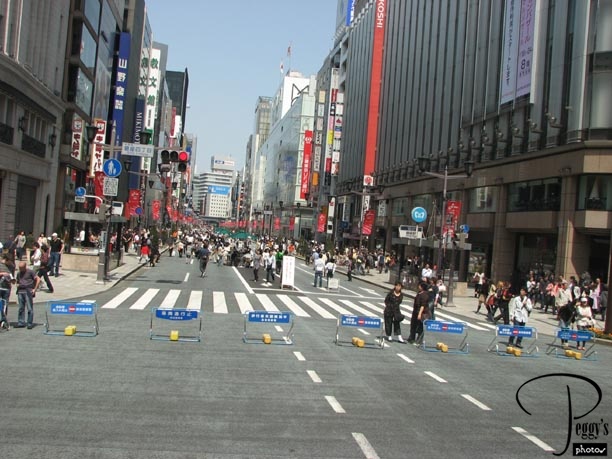
Ginza is the main shopping area of Tokyo. Ginza means “silver place” as a silver mint was built in this area in 1612. In 1872, a fire destroyed the area and it was rebuilt with a Western influence. Today was Sunday and the major street in Ginza was closed to traffic and made into a pedestrian street.

Ginza
Ginza
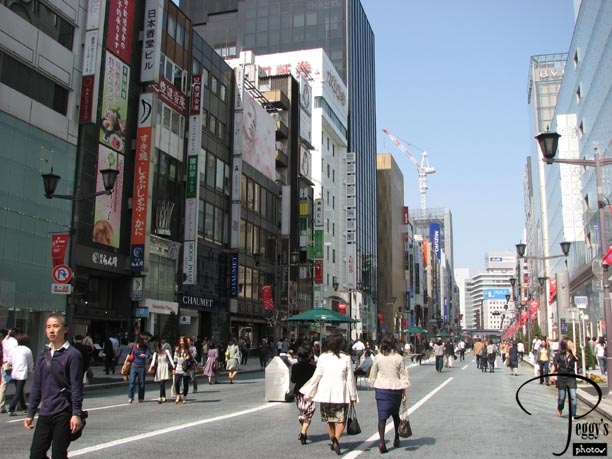
Another view of Ginza.

Ginza
Ginza
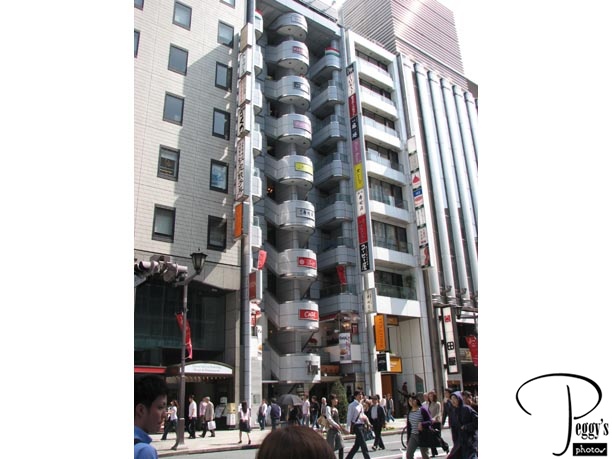
An interesting building in Ginza.

Ginza
Ginza
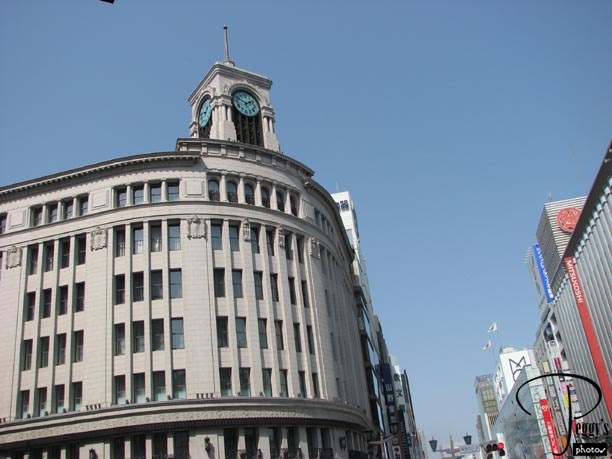
The Wako Department Store.

Ginza
Ginza
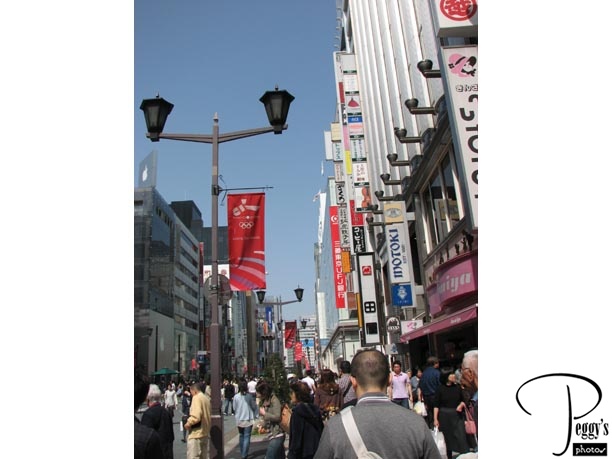
Another view of Ginza.

Ginza
Ginza
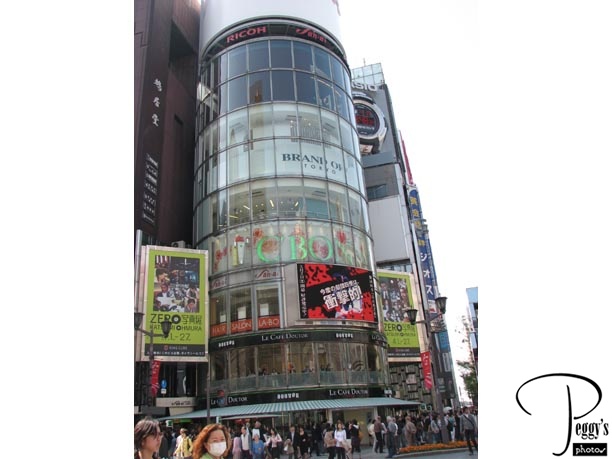
The San’ai Building.

Ginza
Ginza
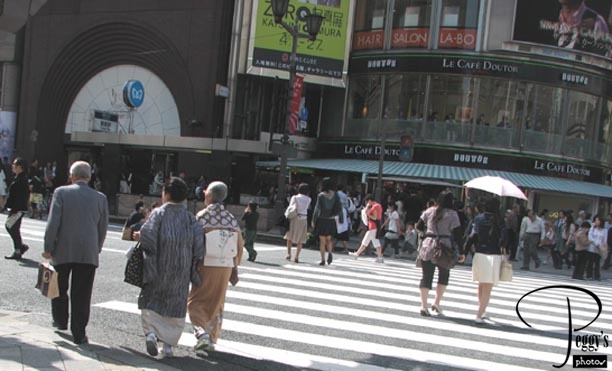
I ate lunch on the bottom floor of the San’ai Building, at the Le Cafe Doutor. I had a delicious tuna sandwich with cheese on a toasted roll, cafe au lait, and cheesecake. I also picked up two breakfast pastries for tomorrow morning. Total cost: 1,860 yen. Almost all the customers at the Le Cafe Doutor were Japanese.

Ginza
Ginza
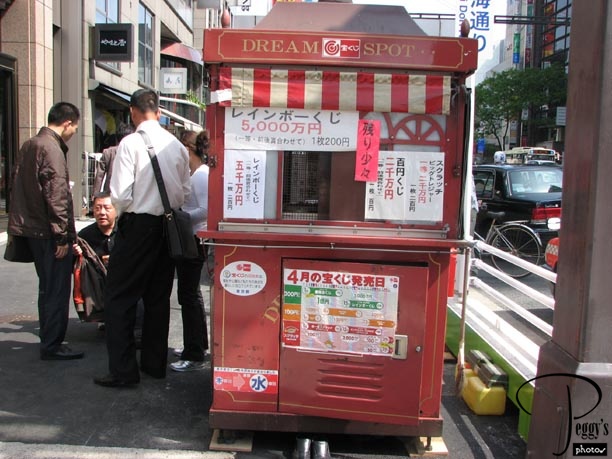
Lottery kiosk.

Ginza
Ginza

Street with cherry trees.

Ginza
Ginza
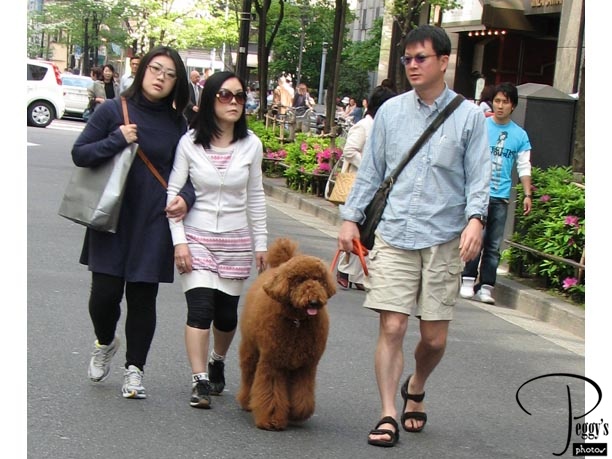
A Japanese dog. All the other dogs that I saw in Japan were of the very small pampered type. This dog also looks pampered, but it is unusual as to its size here.

Ginza
Ginza
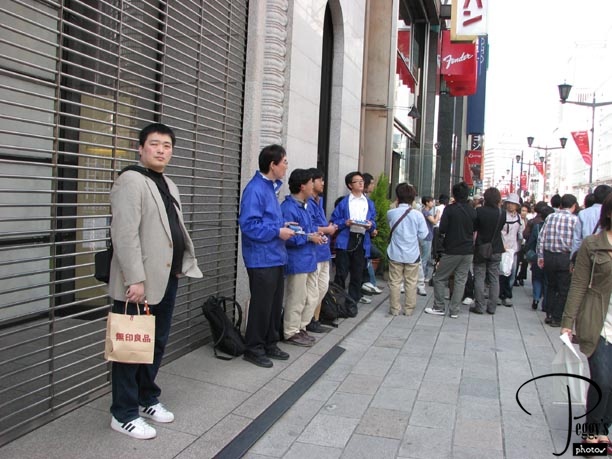
I think that the men with the blue jackets are people counters. I also saw them on the other side of the street clicking away on counters.

Ginza
Ginza

My “moment of truth” has arrived––taking the Tokyo subway. If you are from an area of little public transportation (Los Angeles is still pretty much in that category––the last time I took the light rail line or the subway in LA was about 3 or 4 years ago––I am not public transportation savy). When I first saw this map, I think I panicked (actually, this is the Japanese version of the map; there is also an English language version, which I was using)––there are at least 15 subway lines and a couple of monorails. However, the system is not too hard to learn––almost all of the lines are color–coded and each station has a number. I needed to travel from the Ginza station (G09, color–coded yellow) to the Shimbasi station (G08, also color–coded yellow). This was only one stop, but I needed to travel in the right direction––toward the Shibuya station, the station at the end of the line. At some stations, there were signs with arrows pointing in the direction of the station numbers, such as an right arrow pointing to G–08 to G–01, and all the stations had the English name of the stations posted. (Taxis are very expensive in Tokyo, so there is a real need to learn to negotiate the subway system.)

Ginza
Ginza Station
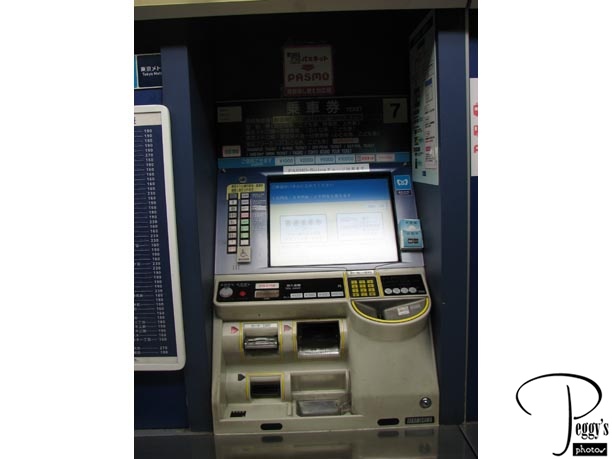
The ticket machine, which was easy to operate as you could press a button for English. My tour book said just to buy the minimum fare. If you underpaid, you will just be required to pay a fare adjustment before you transfer to another line or exit the station. You insert your ticket into the turnstall (tickets have arrows on them so you know which way to insert your ticket) and then you need to pick up your ticket after you are through the turnstall. You need this ticket to exit. If you didn’t pay enough, your exit ticket is refused and you go to fare adjustment to pay whatever you need extra. It also works the other way: Keith and I bought our subway tickets at the wrong machine. We bought the minimum price tickets, but when we inserted them in the turnstall, we were directed to fair adjustment. We had paid too much for our tickets and we were given back our money and then directed to the correct machines to rebuy cheaper tickets. So the rule is, don’t buy your tickets until you are near your line. I also forgot to pick up my ticket at the end of the turnstall. Keith was also with me, so he told me just to come with him through the turnstall––actually, there was no bar preventing you from going through, but when I tried to go through with Keith, a bar jumped up to prevent me from advancing. Keith told the fair adjustment people my problem and I was let through. The fare for the Ginza line for a one–station trip was 170 yen. You can buy an all–day ticket for about 800 yen. Keith bought an all–day ticket before we went on the monorail––900 yen here––but it would only work on the monorail.

Ginza Station
The Tokyo Subway
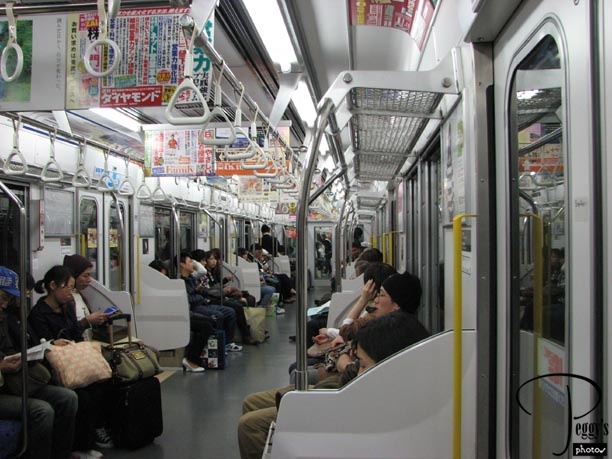
On my way from Ginza Station to Shimbashi Station. The subway cars are very clean and you feel quite safe. The Japanese really don’t look at other people, not like we do in the U.S. all the time. And there are so many Westerners visiting Tokyo, even if you are not Asian, you are not looked at as an oddity.

The Tokyo Subway
Daiba Monorail Station
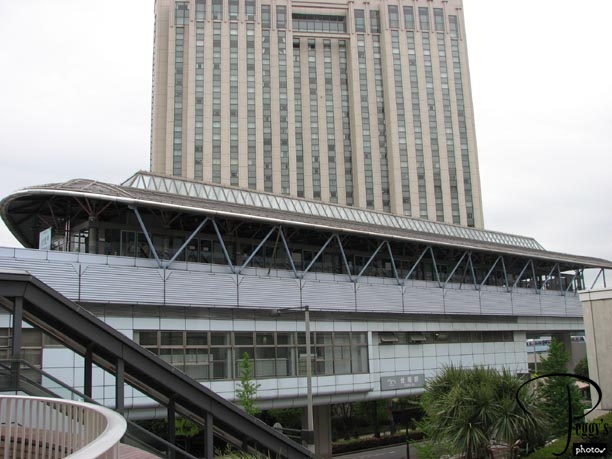
When I arrived at Shimbashi Station, I had to take out my Tokyo subway map as I couldn’t remember if I was to transfer to the Yamanote Line or the Yurikamome Line––neither of these lines are color–coded. A really wonderful Japanese woman asked me where I wanted to go and she led me through a very long walk through Shimbashi Station and up the stairs to above ground where I would catch the Yurikamome monorail line. On other days, finding my way to the above–ground monorail station was a trial. One of my tour guides told me to take, I believe, the Shidome exit, which worked great the first time I tried it. But on other tries, I kept getting to a section that you needed to buy another ticket to get to that exit. There was something to all of this that I still haven’t figured out.

Daiba Monorail Station
Daiba Monorail Station
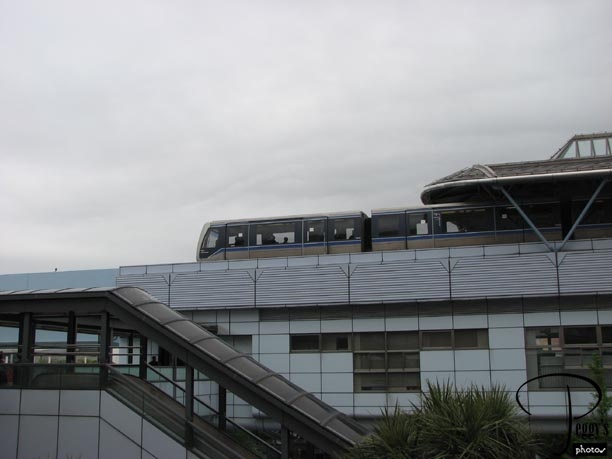
The monorail to the island of Odaiba is a beautiful (both during the day and in the evening), smooth ride. I knew to get off at the Daiba station and had no trouble doing so. Each trip on the monorail was 310 yen. To the right of the station was a 24–hour convenience store, where I stopped at before going back to my hotel, which was also close to the station, to buy orange juice, water, and coffee. Photo: The Yurikamome monorail.

Daiba Monorail Station
Ginza at Night
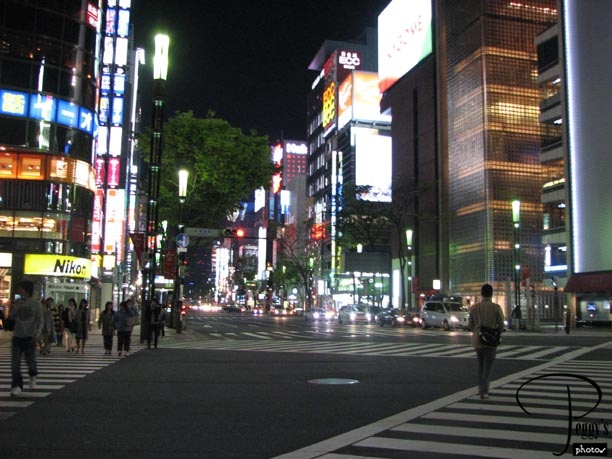
Tonight I was invited out to dinner withe Keith, his CEO and his family, and the director of the European branch of the company from the Netherlands. We ate in Ginza at what was billed as an Italian restaurant. However, it seems that an Italian restaurant in Japan serves mostly Japanese food with some Italian dishes thrown in. I had the Japanese version of Italian spaghetti. It was tasty. This is the only night I ate with this group––either they had come back to the hotel before I did and already had gone out or I had arrived first and had already gone out for dinner. I didn’t have a cell phone in Japan (more about this later), so I couldn’t be easily reached as to anyone’s plans. I took some photos of Ginza at night this evening and also many more on another night. I have put them on a slideshow on this website: Go to Slide Shows, Asia, Japan, “Tokyo: Tokyo at Night.” I also added some other night photos. Included are some of the Shinjuku section of Tokyo, another area with nightlife.
